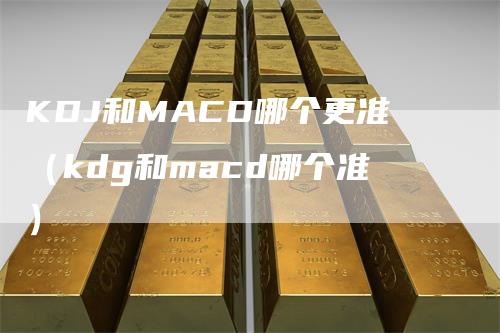
Introduction
When it comes to analyzing the stock market, there are several technical indicators that traders rely on. Two commonly used indicators are KDJ and MACD. Both of them help identify trends and make investment decisions. But which one is more accurate? Let's find out.
What is KDJ?
KDJ stands for \"KDJ Index,\" which is a technical indicator that calculates the stochastic oscillator. It is widely used by traders to determine overbought and oversold conditions in a market. The KDJ values range from 0 to 100, with values above 80 indicating overbought conditions and values below 20 suggesting oversold conditions.
What is MACD?
MACD stands for \"Moving Average Convergence Divergence.\" It is a trend-following momentum indicator that shows the relationship between two moving averages of a stock price. MACD consists of two lines - the MACD line and the signal line. When the MACD line crosses above the signal line, it generates a bullish signal, indicating a potential upward trend in the stock price. Conversely, when the MACD line crosses below the signal line, it generates a bearish signal, suggesting a potential downward trend.
Which one is more accurate?
It's important to note that no technical indicator can guarantee 100% accuracy in predicting the market. Both KDJ and MACD have their strengths and weaknesses.
KDJ is particularly useful in identifying overbought and oversold conditions in the market. This can be helpful for traders who want to take advantage of short-term price reversals. However, it may not be as effective in trending markets where prices continue to move in one direction.
On the other hand, MACD is widely used to identify trend reversals and generate buy or sell signals. It is reliable in trending markets where prices tend to move in one direction for an extended period. However, it may not be as effective in choppy or sideways markets where prices fluctuate without a clear trend.
Conclusion
In conclusion, both KDJ and MACD have their merits and can be useful for different types of market conditions. Traders should consider using a combination of indicators and analyzing other factors such as fundamental analysis before making investment decisions. Ultimately, the accuracy of these indicators depends on the individual's trading strategy and their ability to interpret the signals correctly.
Remember, no indicator can predict the future with certainty, so it's essential to exercise caution and conduct thorough research before making any investment decisions. Happy trading!